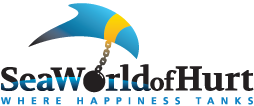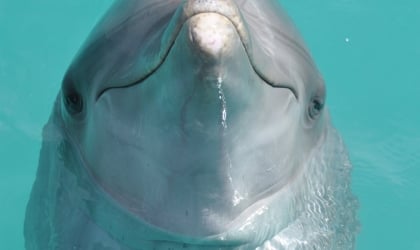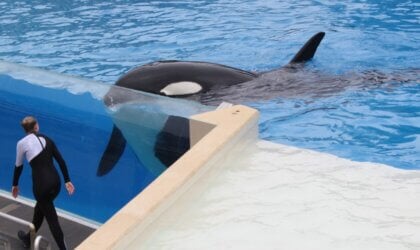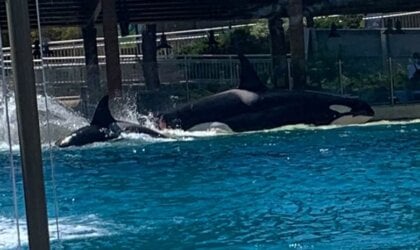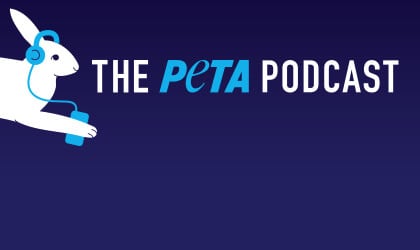She’s not even 5 months old yet—but already, captive baby orca Ula’s life may be at risk. The calf, held at marine mammal abusement park and former SeaWorld partner Loro Parque in Spain is apparently suffering from a severe skin disease or infection and has a disfigured or misshapen head.

Ula’s skin infection seems to have progressed rapidly over the last few weeks and is most clearly visible on her left pectoral fin. Loro Parque is being tight-lipped about her condition, even going so far as to say that “Ula is in perfect medical conditions [sic],” so we don’t know for sure what’s caused her health issues. She may have contracted a pathogen or sustained a traumatic injury. What we do know is that at her young and vulnerable age, either of these things could be life-threatening. Photographs of her tail show what appear to be extensive needle marks, suggesting that she’s undergone frequent blood draws or injections of antibiotics.

Ula also appears to have been born with a deformed head or to have developed the deformity.

Experts on marine mammals agree that the calf’s health appears to be in decline, as reported by Voice of the Orcas.
“I’ve never seen anything like this in the wild. Not a disfigurement of the melon or pathogen of any body part like this poor calf has. I feel so sorry for both her and her mother, Morgan. It emphasizes to me just how wrong captivity for these animals is at facilities like Loro Parque.”
—Dr. Ingrid Visser, marine biologist with the Orca Research Trust
“In the wild she’d have the full support of a … mother, midwives, babysitters and brothers to protect her. In this situation I imagine her chances of survival are small.”
—Dr. Jeffrey Ventre, medical doctor and former SeaWorld orca trainer
“Unfortunately, if Ula does survive then her life will be spent in a barren tank performing tricks for frozen fish. Not a good life for an orca. Not a good life for any cetacean.”
—Dr John Jett, research professor at Stetson University, former SeaWorld orca trainer, and advocate with Voice of the Orcas
“The appearance of Ula’s diseased pectoral fin is incredibly concerning. Not only does the skin look compromised, the very shape and contours of the fin itself also appear disfigured. Such pectoral fin and melon disfigurement, to my knowledge, has never been documented in wild orcas and has likely developed during this calf’s short life in captivity. If so, it may have resulted from a traumatic injury and/or an aggressive bacterial or fungal infection. Aggressive skin infections can be difficult to treat in captive orcas and are often indicative of another underlying illness or a compromised immune system. Particularly in light of the several recent orca deaths from infection at SeaWorld, including that of 3-month-old Kyara, and because SeaWorld was apparently responsible for Ula’s mother, Morgan, at the time Ula was conceived, it is more important than ever for these facilities to make the orcas’ clinical histories available to the scientific community.”
—Dr. Heather Rally, supervising veterinarian, The PETA Foundation
Infection has been a contributing factor in more than half the orca deaths at SeaWorld’s parks, a recent San Antonio Express-News investigation revealed. “Federal data obtained through a Freedom of Information Act request … found that infections have caused the deaths of almost 150 sea lions, beluga whales, orcas and other dolphins at SeaWorld parks in the last 30 years. They have been especially deadly for [orcas], contributing to 60 percent of deaths for the species.”
Ula is separated from her mother, Morgan, by a metal barrier and is confined to a tiny barren tank, all alone. Visitors to Loro Parque observed Morgan floating forlornly outside the gate, likely hoping to catch a glimpse of her calf.

Until recently, many of the orcas at Loro Parque were owned by SeaWorld. After SeaWorld had already announced that it would stop breeding orcas, including at Loro Parque, Morgan was bred to SeaWorld orca Keto. The two theme parks announced the end of their partnership before Loro Parque announced Morgan’s pregnancy.

Morgan and Ula are just two more victims trapped in the marine-mammal theme park machine. History will repeat itself until all these animals are retired to ocean sanctuaries. Please help by urging SeaWorld to release all the animals it has imprisoned to sanctuaries immediately.
